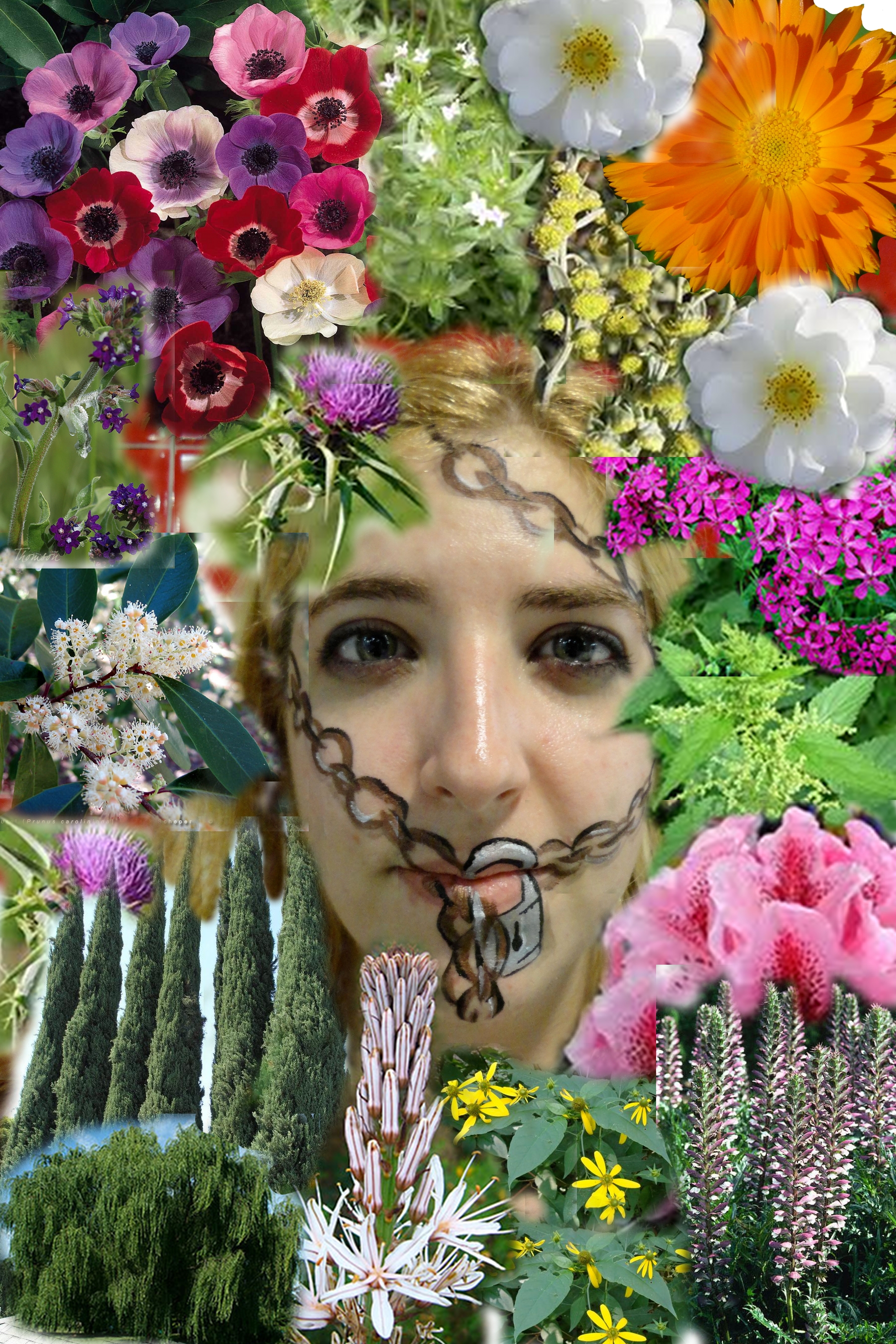Without metaphor, our language and literature would be pale shadows of themselves.
For class, we had to “remediate” a metaphor, which was to manipulate an assigned text into a different media, and then present it in public. We were assigned William Blake’s poem “The Garden of Love” and chose to create an image to represent the metaphors we saw in the poem. Below is the poetry, and following that, the image, with the analysis below it.
The Garden of Love

Key to flowers for “Garden of Love” remediation
Absinthe = absence
Acanthus = unbreakable bonds
Anemone = abandonment
Asphodel= my regrets will follow you to the grave
Bugloss = falsehood
Catch-fly = Snare
Cypress = Death or grief
Cherry Laurel = Perfidy
Madder = Calumny
Calendula = pain
Nettle – cruelty
Rhododendron = danger
White rose = innocence, silence
Sunflower = pride
Thistle = criticism
Weeping willow = bitter sorrow
There are multiple layers of meaning able to be drawn from Blake’s poem, which is an indictment not only of religion, but of the culture that allowed the chains to be drawn tight around them, and which preferred to ponder ghastly graves than flowers, lightness, and love. The use of a floral language, even if not directly referenced, is implicit in his use of the contrast between sweet flowers, and briars. In the presentation image, the flowers used to convey the sentiments of the poem are weedy, unbeautiful, or ephemeral: that is, not a flower you could pluck and add to a bouquet without it dying very quickly.
Blake himself, in the poem, uses language in a way meant to sway his audience toward him. Who could resist the idea of the idyllic child’s play on the green, romping in the sunshine? Then, from sweet flowers to tombstones, again, the natural draw is to life, joy, and the desires he so vividly describes as bound with briars. No child having grown up in the countryside playing outdoors and picking berries would be able to resist the memory of sweet juices hard-won with a little blood and tears from scratches. Blake, a master of this appeal, makes his audience recoil from a cultural constant, the weekly trip to a church, and perhaps, consider what they went to the church for, and why.




